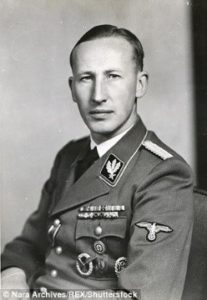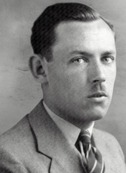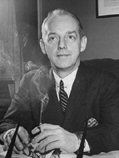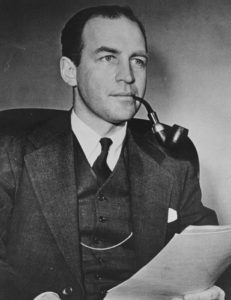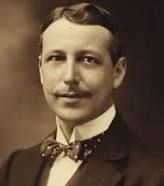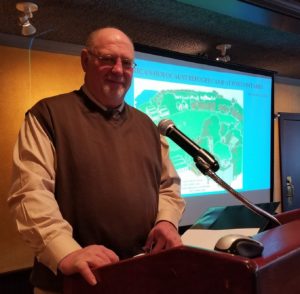By Paul A. Lear
“Nazi Germany fought two simultaneous wars: the military war against the Allies and the genocidal war against the Jews. It launched the first on September 1, 1939, riding roughshod over Poland and daring the British and French to protest. Americans argued for more than two years over whether to join the conflict, before the Japanese attack on Pearl Harbor ended the debate. The second war began in 1941 when a decade of racial and religious persecution morphed into a plan to annihilate the Nazi’s innocent enemies.” Rebecca Erbelding 2018.
On 22 January 1944, President Franklin D. Roosevelt announced an Executive Order [9417] creating a War Refugee Board and tasking it with taking immediate action to effect the rescue and provide relief for Jews and other minority groups persecuted by Nazi Germany and its collaborators. After nearly 12 years, the United States reversed its policy of ignoring the plight of Jews and persecuted minorities in Nazi-occupied Europe, and became the first Allied country to establish a policy to help save them from Hitler’s mass extermination program. The Fort Ontario Emergency Refugee Shelter, destined to be the only camp for Holocaust victims in the United States during World War II, was an offspring of the War Refugee Board.
Persecution and segregation of Jews in Germany was conducted in increments after the Nazi’s achieved power in 1933. State sponsored racism was followed by anti-Jewish legislation, boycotting of Jewish businesses, violence, and pogroms, all intended to systematically separate Jews from society and force them from Germany. Anti-Jewish policies increased after the 1939 German invasion of Poland and led to imprisonment and eventual murder of Jews in all of Nazi-occupied Europe. The Nazi’s initially established ghettos in territories in Poland to where they transported Polish and European Jews, and where they lived in overcrowded, unsanitary, and starving conditions. SS and police units acting as mobile killing units followed in the wake of advancing army columns during the June 1941 German invasion of the Soviet Union, and began systematically wiping out entire Jewish communities.
On 31 July, 1941, Nazi leader Hermann Goering authorized SS General Reinhard Heydrich to make plans for a “complete solution of the Jewish question.” By fall, the Nazi’s augmented shooting operations by using mobile gas vans to pump carbon monoxide into sealed spaces, killing those locked within them. Next, they began constructing killing centers such as Belzec, Sobibor, and Treblinka in Poland, for the single purpose of the mass murder of Jews. Auschwitz-Birkenau was designated a killing center in the spring of 1942, where one million European Jews were murdered. By wars’ end in May 1945, six million Jewish men, women, and children, approximately two-thirds of the Jews living in Europe before WWII, were killed by gassing, shooting, and other means.
Nationwide rallies and protests against the treatment of Jews in Germany began in the United States immediately after the Nazi’s took power in 1933, but newspaper coverage soon ceased and the American public quickly lost interest. Thousands of Jews began applying for exit visas as life in Germany became more impossible. Assisting refugees escape from Europe or elsewhere had never been a priority for the U.S. Government, or its citizens, as conditions such as those in the 1930’s had never occurred before. Most Americans were isolationist and wanted little to do with European affairs after World War I, and were focused on the Great Depression and high unemployment. Immigrants and refugees were competition for scarce jobs.
In 1941-42 Americans had no preexisting mental framework or mindset that would help them understand the Nazi program to totally annihilate European Jews. The word “Holocaust” was unknown, and “genocide” did not become a word until December 1944. Rumors of the destruction of villages and their populations seemed to be just exceptionally brutal consequences of the war, and during war, civilians sometimes die. Since 1933, Americans had come to realize that the Nazis had an extraordinary hatred for the Jews, and they could comprehend occasional stories of Jews being murdered. However, at this early stage of World War II, Americans could not yet distinguish that those stories were different, and not just wartime propaganda about Nazi cruelty.
By 1943, increasing public awareness of Nazi atrocities motivated individuals, groups, and some in government to propose various plans or proposals to rescue Jews in Europe. Public pressure increased because of agitation of a group of Palestinian Jews led by Peter Bergson (pseudonym for his birth name Hillel Kook). Originally in the U.S. to form an independent Jewish Army under Allied command, they changed missions in 1943 and formed the Emergency Committee to Save the Jews of Europe. The “Bergson Group” placed full-page advertisements in major newspapers and sponsored elaborate public events to increase awareness of the mass murders of Jews in Europe.
The Bergson Group used the names of prominent Americans in its advertisements, and condemned the inaction of the U.S. government, particularly the State Department, in failing to help the Jews. Bergson’s harsh language and brazen tactics rankled many in Congress, mainstream American Jewish groups, and, in the Roosevelt administration. In November 1943 the Emergency Committee succeeded in getting some members of Congress to sponsor identical bills in the House of Representatives and Senate. The bill, popularly known as the “Rescue Resolution,” challenged FDR to establish a commission to devise and enact plans to rescue the Jews of Europe.
With public pressure increasing in the summer and fall of 1943, tensions rose within the Roosevelt administration between the State Department, headed by Cordell Hull, and Treasury Department, under Henry Morgenthau Jr. When the World Jewish Congress applied for a license and proposed a plan to fund relief for Jews in France and Romania, and the evacuation of Jews from Romania, with support from Treasury, all that resulted was a long series of cables, discussions, and delays emanating from State Department bureaucratic inertia, fears that it would set a precedent, and concerns that the money might end up in enemy hands.
Treasury staff also discovered during investigation of the causes of licensing delays, that in January and February 1943, the State Department deliberately tried to stop information about the mass murder of Jews from getting to the United States. At the end of 1943, Treasury staff led by General Counsel Randolph Paul, and head of Foreign Funds Control John Pehle, had obtained enough incriminating information to present a case to Secretary Henry Morgenthau Jr. Pehle and Treasury staff laid out their allegations of State Department obstruction in a 17 page memo titled “Report to the Secretary on the Acquiescence of this Government in the Murder of the Jews.” The introduction warned;
“Unless remedial steps of a drastic nature are taken, and taken immediately, I am certain that no effective action will be taken by this government to prevent the complete extermination of the Jews in German controlled Europe, and that this Government will have to share for all time the responsibility for this extermination.”
Morgenthau changed the title to “Personal Report to the President,” and toned down some of the impassioned rhetoric before meeting with the President. On 16 January 1944, Treasury Secretary Henry Morgenthau Jr., John Pehle, and Randolph Paul met with President Roosevelt in the Oval Study at the White House. Pehle delivered a briefing of the facts that Treasury had discovered, and presented FDR with a draft executive order to establish a War Refugee Board tasked with the “immediate rescue and relief of the Jews of Europe and other victims of enemy persecution.” Oscar Cox, administrator of Lend-Lease, who had been considering the concept of a relief agency supported through Lend-Lease funds, helped draft the Executive Order. Roosevelt made some minor changes and approved it.
Executive Order 9417 establishing the War Refugee Board as an independent government agency under the Executive branch was issued on 22 January 1944; it operated until 15 September 1945 when President Harry S. Truman closed it with Executive Order 9614.
The War Refugee Board was headed by Secretary of War Henry Stimson, Secretary of State Cordell Hull (after November 1944, Edward Stettinius and Secretary of the Treasury Henry Morgenthau Jr. It was largely run by the Treasury Department, where most of its staff came from, with offices in the Treasury building. John Pehle was appointed its first director, and put together a staff to run the offices and appointed representatives overseas. Brigadier-General William O’Dwyer replaced Pehle in January 1945 and served as director until the War Refugee Board was dissolved in September 1945. Funding came from the President’s Emergency fund and Congressional appropriations. The War Refugee Board also streamlined projects and work for private aid organizations, most of them Jewish, making it easier for them to fund rescue and relief projects in Europe.
The War Refugee Board had two objectives. The first was “the immediate rescue and relief of the Jews of Europe and other victims of enemy persecution.” For twenty months a small staff in Washington built and worked with a team of international relief workers, diplomats, smugglers, wealthy supporters, and activists to run operations in Europe, North Africa, the Middle East, Central, and South America. The War Refugee Board used any device possible to trick the Nazis, created false identity papers, found ways to get food and medicine into concentration camps, paid informants, bribed officials, laundered money, negotiated ransoms, bought weapons for resistance fighters, aided Jewish refugees to escape to Palestine, and channeled millions of dollars into Europe to help hide and rescue refugees.
The second objective of the War Refugee Board was “the establishment of havens of temporary refuge for such victims of enemy persecution.” The Fort Ontario Emergency Refugee Shelter in Oswego, N.Y. was one of the “havens” for victims of enemy persecution, and placed in the Continental United States by FDR to induce reluctant European allies to establish camps in their countries and territories. Other camps were located in Italy, Spain, and around the Mediterranean in North Africa.
After WWII, the War Refugee Board’s first director, John Pehle, described the board as “little and late” in comparison to the immense scale of the Holocaust. However, in the War Refugee Board’s final report, staff estimated that they saved tens of thousands of lives, and helped hundreds of thousands more.
“Nazi Germany had an official government policy of murdering Jews. Now, for the first time, an Allied country had an official government policy to save them. In that moment, the United States joined the second war.” Rebecca Erbelding, 2018.
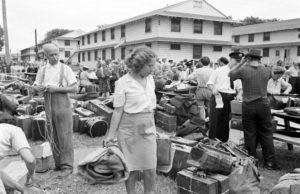
The Fort Ontario Emergency Refugee Shelter in Oswego NY was one of the “havens” for Jewish refugees designated as a core objective of the War Refugee Board. Most havens or camps were located in allied countries or neutral territories in Europe or around the Mediterranean.
SS General Reinhard Heydrich helped organize Kristalnacht, a series of coordinated attacks against Jews in Nazi Germany and parts of Austria in 1938, and the Einsatzgruppen, a special task force that followed German armies and murdered over two million people. On 31 July 1941 was placed in command of organizing the mass extermination of all Jews in Nazi-occupied Europe in the summer of 1941. He was assassinated by Czech agents in May 1942. In retaliation, the villages of Lidice and Lezaky were razed, all of the men and boys over age 16 were killed, and all but a few women and children were deported and killed in concentration camps.
Auschitz-Birkenau was the largest of the German concentration camps where 1.1 million men, women, and children were killed.
Zionist and activist Peter Bergsen advocated in the U.S. for the formation of a Jewish Army and for the rescue of Jews in Europe during the Holocaust, and understood the need for dramatic tactics. Bergsen’s aggressive lobbying methods angered the leaders of many American Jewish organizations. However, he successfully alerted Americans to the ongoing slaughter of European Jews and heightened pressure on the Roosevelt administration to initiate rescue efforts. It is doubtful that the War Refugee Board would have been established without Bergson’s efforts, and tens of thousands more would have died at the hands of the Nazi’s during WWII.
The Rabbi’s March was a demonstration in support of U.S. and allied action to halt the extermination of the Jews in Nazi-occupied Europe. Held in Washington, DC on 6 October 1943, and organized by Peter Bergsen, FDR refused to meet with the Rabbis out concerns for violating diplomatic neutrality, but also on the advice of some of his Jewish aides and several prominent American Jews. The march to the U.S. Capitol steps, where they were reluctantly received by Vice President Henry Wallace, involved over 400 mostly orthodox rabbis from around the United States and Canada. Angry that the FDR would not meet with them, the Rabbis marched and stood in front of the White House. FDR left shortly before they arrived.
Secretary of the Treasury Henry Morgenthau Jr. was the only Jewish member of Roosevelt’s cabinet. Morgenthau was concerned about Nazi persecution of Jews in Germany through most of the 1930’s, but when he realized that the quota system was inadequate to accommodate large numbers of Jews trying to leave Germany, he began bringing rescue plans to FDR’ attention. On 16 January 1944, Morganthau and Treasury staff met with the President and presented him with a memorandum detailing how the State Department blocked news of mass exterminations of Jews, and stalled Treasury efforts to issue a license to finance an attempt to provide relief and evacuation of Jews in France and Romania. Morgenthau warned FDR of future negative assessments of his administration with respect to attempting to rescue European Jews if he did nothing. As a result, the War Refugee Board was established by Executive Order.
Randolph Paul served as General Counsul of the Treasury Department and accompanied Treasury Secretary Henry Morgenthau Jr., John Pehle, and Oscar Cox to the 16 January 1944 meeting resulting in creation of the War Refugee Board.
John W. Pehle was a U.S. Treasury Department lawyer overseeing Foreign Funds Control and was co-author of the January 1944 “Report to the Secretary on the Acquiescence of this Government in the Murder of the Jews,” exposing State Department obstruction and the alleged cover-up of the Holocaust. Pehle became the first director of the War Refugee Board.
Oscar Cox served as General Counsel of the Lend-Lease program in the Roosevelt administration, and helped Treasury staff in their behind the scenes efforts to promote the rescue of Jewish refugees. After preparing a memo suggesting creation of a government rescue agency that went nowhere, Treasury Secretary Henry Morgenthau Jr. invited Cox to join in staff meetings to discuss the refuge issue. As the Rescue Resolution in Congress rose in Congress and threatened to become a domestic political problem for FDR, Cox urged Morgenthau to meet with the President over creation of a rescue agency. Executive Order 9417 creating a War Refugee Board, issued on 22 January 1944, closely resembled the draft Oscar Cox prepared.
Rebecca Erbelding Ph.d is the author of RESCUE BOARD, the most objective history of the War Refugee Board published to date. RESCUE BOARD is the result of ten years of exhaustive research investigating over 43,000 sources by Erbelding, who is a historian, curator, and archivist at the United State Holocaust Memorial Museum in Washington, DC. Erbelding participated in the last reunion of the Fort Ontario refugees in 2014, and was part of the team that visited Fort Ontario to review artifacts for inclusion in the 2018 AMERICANS AND THE HOLOCAUST Exhibit. The three-year exhibit features a gallery on the Fort Ontario Emergency Refugee Shelter, and a section of the iconic barbed wire and chain link fence surrounding Shelter during WWII.
Paul A. Lear is Historic Site Manager at Fort Ontario State Historic Site and lectures and writes on the Fort Ontario Emergency Refugee Shelter, and history of Fort Ontario since 1755. Lear was a founding committee member of the Safe Haven Museum and Education Center from 1989 to 1992, and served on its board and building committee from 2000 to 2004. Lear is working on 75th Anniversary Fort Ontario Emergency Refugee Shelter Commemorative activities with Safe Haven Museum and Education Center President Kevin Hill, NYS Parks, and the Friends of Fort Ontario.

